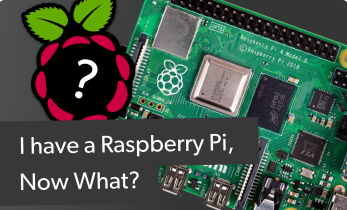Your Next ESP32 Might Not Have Connectivity
The ESP32 chip is synonymous with two things: connectivity and processing power. It's become so well-loved that it's hard to talk about any other microcontroller online - it's almost become the modern equivalent of "You could have used a 555 timer for that!"
This is why the news that Espressif is releasing the ESP32 P4 - a 400 MHz dual-core RISC-V microcontroller with no connectivity - may come as a bit of a shock to folks who are used to the all-bells-and-whistles approach.
It might, however, be the most exciting chip they've ever released. We talked about the announcement in a recent Electromaker Show (Timed Link):
While there isn't a price on this part as yet, it seems likely it'll be priced to be competitive with other general-purpose workhorse MCUs like the STM32F7x. It also comes with a number of advantages over the more traditional ESP32 setup.
Firstly is the power saving potential. The 400 MHz dual-core RISC-V processor is complemented with a third low-power core running at 40 MHz. This, combined with no power-hungry radio module, will allow extremely low-power usage. Alongside a huge list of potential use cases and peripherals stands another easily overlooked fact: The P4 has up to 50 general purpose input/out (GPIO) pins. This is much more than any previous chip from Espressif and more than most MCUs available in this class.

We haven't even started to talk about the onboard AI capabilities and security features. We'll take a look at the full specs in a moment, though it's worth noting that at this stage, there's no purchase information or release date. The original press release from Espressif can be found on their blog, and that's likely where you'll first hear any new info about the ESP32 P4!
ESP32 P4 Specifications
So far, we are going on what Espressif released in their blog post and the accompanying Block Diagram shown above.
- MCU subsystems
- Dual-core RISC-V HP (High-performance) CPU @ up to 400 MHz with AI instructions extension and single-precision FPU, 768KB of on-chip SRAM
- Single-RISC-V LP (Low-power) MCU core @ up to 40 MHz with 8KB of zero-wait TCM RAM
- Memory & Storage I/F – Support for external PSRAM and flash
- GPU – 2D Pixel Processing Accelerator (PPA)
- VPU – H.264 and JPEG codecs support
- HP peripherals
- Display I/F – MIPI DSI and parallel LCD display interface
- Camera I/F – MIPI-CSI with integrated ISP and parallel camera interface
- Audio – I2S with PDM
- Networking – Ethernet
- USB – USB OTG 2.0 HS, USB 1.1 FS Serial/JTAG
- SPI, I2C, I3C, LED PWM, MCPWM, RMT, UART, and TWAI
- ADC, DAC
- SDIO Host 3.0 for high-speed connectivity.
- Up to 50x GPIOs
- General-purpose timers, watchdog timers, system timers
- LP peripherals
- SPI, UART, I2C
- I2S with VAD (for wake word detection)
- Touch control
- Temperature sensor
- Security
- Secure Boot
- Flash Encryption
- Cryptographic accelerators for ECC, SHA, AES, RSA, ECDSA
- TRNG
- Digital Signature Peripheral
- Dedicated Key Management Unit
- Access permission management
- PMA and PMP
That's all she wrote, for now, at least. One thing is for sure: If this is as available and easy to program as other ESP32 chips, you can be sure they'll be showing up everywhere pretty soon!
We'll be revisiting the P4 as soon as there is more information on it. Meanwhile, if you like stories like these, you'll love the Electromaker Show, our weekly round-up of all things Maker and Embedded. Join us on YouTube or on all major podcast services.














































